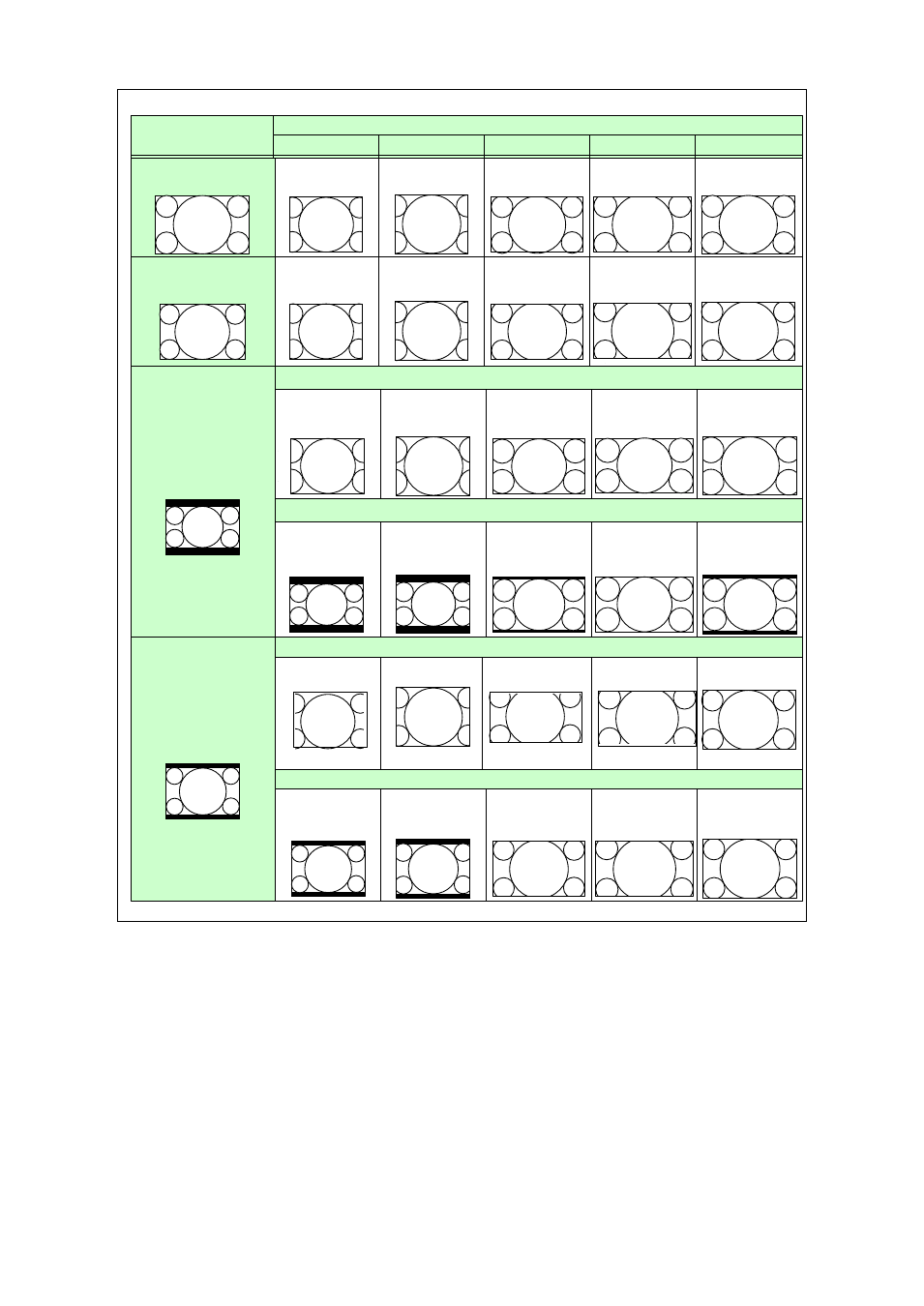IDK MSD-54 Series User Manual
Page 55

55
* Aspect ratio set for the display device refereed
14:9 letter box signal
Right/left side is cut
Top, bottom, right, left
sides are cut
Top, bottom, right, left
sides are cut
AUTO-2
Top&bottom sides are
cut
Top&bottom sides are
cut
Top&bottom sides are
cut
Top&bottom sides are cut
Top&bottom sides are
cut
Top&bottom sides are
cut
AUTO-1
Right&left sides are cut
Top&bottom sides are
cut
Top&bottom sides are
cut
Top&bottom sides are
cut
16:9 letter box signal
AUTO-2
Top, bottom, right, left
sides are cut
Top, bottom, right, left
sides are cut
Top&bottom sides are
cut
Top, bottom, right, left
sides are cut
Top, bottom, right, left
sides are cut
AUTO-1
14:9 video signal
Right&left sides are
cut
Right&left sides are cut
Top&bottom sides are
cut
Top&bottom sides are
cut
Top&bottom sides are cut
16:10 video signal
Right&left sides are cut
Right&left sides are cut
Top&bottom sides are
cut
Top&bottom sides are
cut
Input signal
4:3
5:4
5:3
16:9
16:10
Aspect ratio of destination display device*
[Selecting “SIDE CUT/TOP BOTTOM CUT” for aspect ratio restoration processing]
[Figure 8.17] Restore aspect ratio -2(2/2)
Aspect ratios of analog composite video signals (NTSC/PAL), S-Video signals (NTSC/PAL), and analog
YPbPr signals (SDTV/HDTV) are restored based on ID-1 signals and WSS signals, while aspect ratio of HDMI
signals is restored based on packets called InfoFrame. ID-1 and WSS signals include recognition signals of
aspect ratio in order to switch the aspect ratio automatically. InfoFrame contains the same kind of the
identification data of aspect ratio.
Even with “AUTO-1” or “AUTO-2”, the aspect ratio is not restored if recognition signals with valid aspect ratio
is not input. (If any of analog composite video signals (NTSC/PAL), S-Video signals (NTSC/PAL), analog
YPbPr signals (SDTV), or HDMI signals (SDTV) is input, the MSD performs in the same way as when the
input aspect ratio is 4:3; if analog YPbPr signals (HDTV) and HDMI signals (HDTV) are input, it performs as